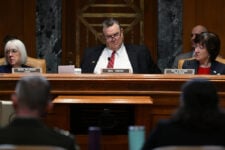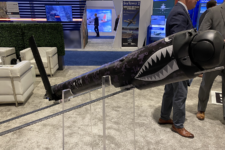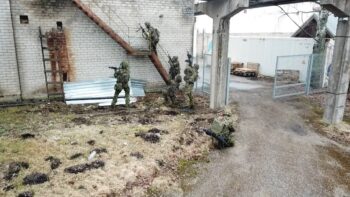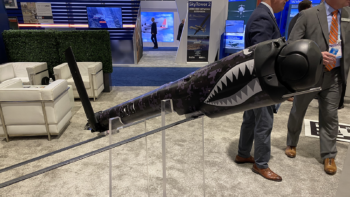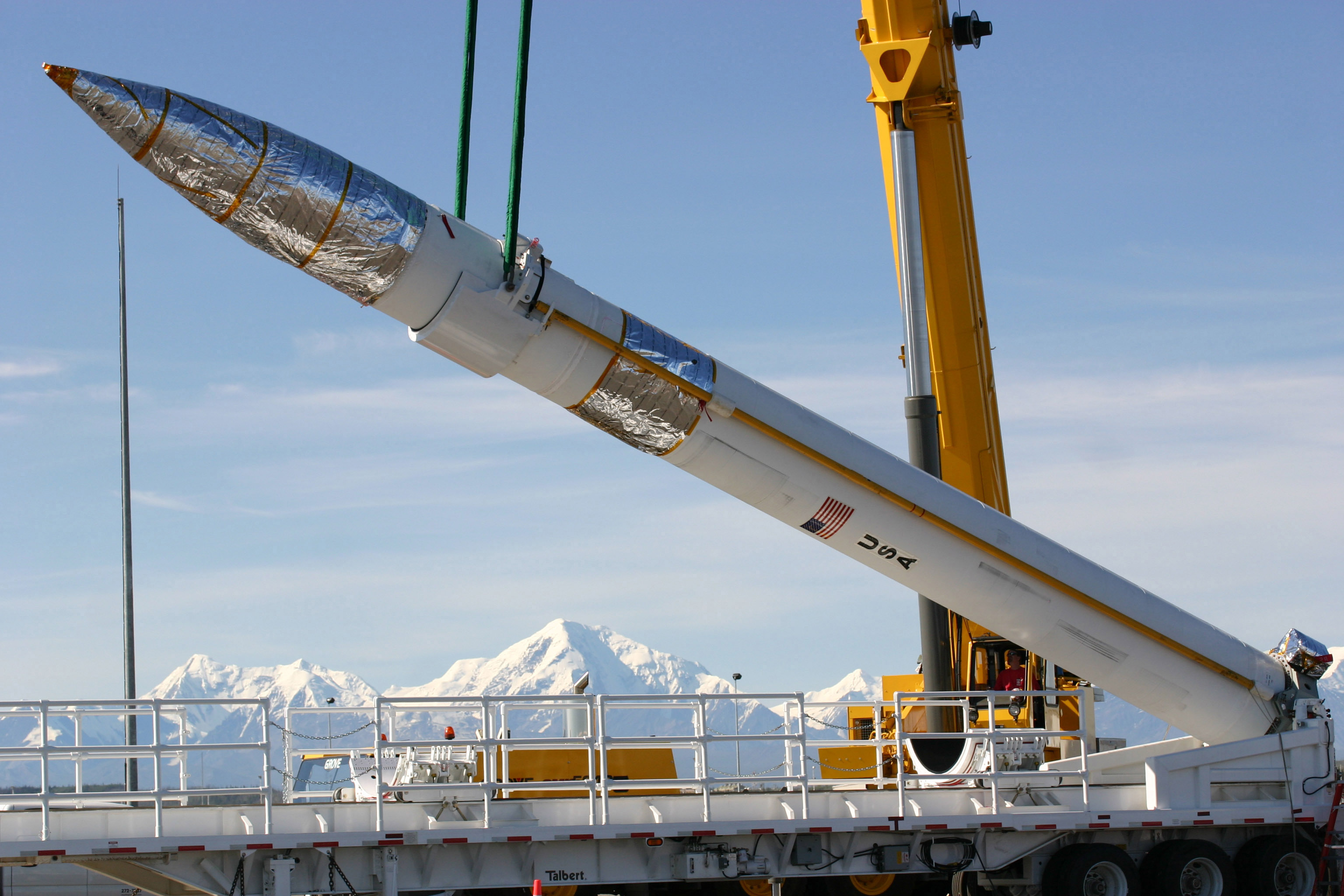
A Ground-Based Interceptor is lowered into its missile silo in Alaska. (File)
The Biden administration’s strategic review, including its work on the Missile Defense Review, is expected to be completed by the end of the year. One major decision facing Pentagon leadership is whether to alter the current homeland defense posture. In this op-ed, Walter Slocombe and Robert Soofer — who served in the Clinton and Trump administrations, respectively — argue the bipartisan case for keeping the current strategy.
At the recent Space and Missile Defense conference in Huntsville, Ala., senior defense officials confirmed that the Biden administration’s missile defense policy review is well underway. And one of the most consequential questions for that review concerns whether to stay the course on improving US homeland missile defenses.
Early indications are promising. In March, the Department of Defense approved the Next Generation Interceptor (NGI) to proceed, and it has received strong support from Congress. It has also received support from both STRATCOM head Adm. Charles Richard and NORTHCOM leader Gen. Glen VanHerck, who would operate the system in a time of crisis.
But NGI has its critics within the administration, in Congress, and in certain think tanks, setting the stage for a high-stakes policy debate between those who value missile defense as an enabler of US grand strategy, and those who doubt any missile defense system can perform well or fear that enhanced missile defense may start an arms race with Russia and China.
The issue is staying ahead of limited long-range missile threats from rogue regional actors, not defense against Russian or Chinese attacks, which instead relies on nuclear deterrence. This has been the guiding principle of US missile defense policy since the end of the Cold War. That’s why it is essential to sustain the strategic modernization program approved under Obama, continued with marginal adjustments under Trump, endorsed under Biden and backed, in a largely bipartisan manner, by Congress.
To maintain a defensive posture towards North Korea, the Obama administration added 14 Ground Based Interceptors (GBIs) to the 30 fielded by the Bush administration and sought to enhance the reliability of Ground-based Midcourse Defense (GMD) by developing a Redesigned Kill Vehicle (RKV) for the GBI. The Trump administration altered the acquisition approach to include a fully modernized interceptor, with a new booster, avionics, and kill vehicles — the NGI program. Once developed, 20 NGI/GBIs would be added to the 44 currently deployed in Alaska and California.
Secretary of Defense Lloyd Austin has testified to Congress that missile defense against rogue state threats is a “central component” to keeping the homeland safe. In support of this priority, the Biden administration has, so far, kept the ball rolling by approving NGI development to proceed with two competitive contractor teams. Meanwhile, with the support of Congress, the Pentagon is executing a Service Life Extension Program for GMD to upgrade and replace ground system infrastructure, fire control, and kill vehicle software. These efforts will improve GMD reliability and effectiveness and help secure the system against cyber threats until NGI fielding in 2028.
But that progress could be stymied, or thrown off course altogether, depending on the decisions made in the next few months by the Biden administration and Congress.
Outside voices — and some individuals who are now part of the MDR process or whom have a role in Congressional action — have criticized the cost, efficacy, and necessity of NGI or, in some cases, for any homeland missile defense. They argue that North Korea could easily overwhelm planned upgrades and future deployments, while the expansion of US missile defense capabilities, meant to pace the North Korean threat, could eventually upset strategic stability with Russia and China. Several points deserve to be made in response.
First, while North Korea intends to grow its ICBM force in the coming years, it has long been a premise of our BMD policy that our systems will adapt to outpace the threat. It is reasonable to assume that an additional 20 Ground Based Interceptors, combined with newly designed kill vehicles and the improved reliability of the GMD system, will be sufficient to stay ahead of the threat.
Second, the costs, while significant, must be understood in context. The reported overall cost of about $18 billion dollars develop ($13B), field ($2.3B), and operate ($2.2B) the NGI system will be spread over ten-plus years. The funding for NGI will, according to numbers laid out in the FY21 budget request, be approximately one-quarter of one percent of DoD’s budget over FY21-FY26. Combined NGI and GMD funding will account for about one-half of one percent of the DoD budget across that same period. These are not unreasonable investments to protect the nation against rogue state ICBMs.
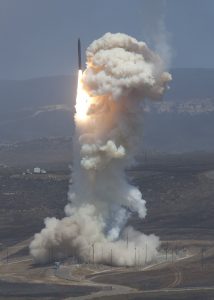
A Ground-Based Interceptor test launch. (File)
Third, with respect to efficacy, the senior military leaders charged with defending the nation against North Korean ICBM threats have repeatedly expressed confidence in the system, while the DoD Director for Operational Test and Evaluation has reported that the current GMD system has demonstrated capability to defend the homeland from a small number of ICBMs. Going forward, the GMD system will be able to handle a greater number of North Korean ICBM threats through reliability improvements and the development of NGI, which will be tied to a conservative acquisition strategy, carrying two prototypes through critical design review, consistent with rigorous testing and the principle of “fly before you buy.”
Fourth, proceeding with NGI is important for a US strategy that, according to the White House, seeks to “promote a favorable distribution of power to deter and prevent adversaries from directly threatening the United States and its allies, inhibiting access to the global commons or dominating key regions.”
Adversary offensive missile capabilities are meant to coerce the United States, to limit our freedom of action, to discourage us from supporting our allies or countering regional challengers, and, ultimately, to weaken our alliances. Far from replacing deterrence for North Korea – and other potential proliferators — a significant US defense, adapted to changing developments, complements the threat of overwhelming retaliation. A North Korean regime, considering use of nuclear weapons to coerce the US and our allies, would have to be concerned that such action would not only be fatal because of inevitable US response, but also quite likely to be futile because their missiles would be intercepted.
Moreover, modernizing and expanding our homeland defense underpins President’s Biden’s push to “revitalize our ties with friends and partners.” An important element of renewing alliances is convincing allies that the United States is prepared to run risks on their behalf — especially as some countries seek to use the Afghanistan situation to cast doubt on American resolve. Strengthening US homeland defense helps provide that confidence by reducing our own vulnerability to North Korean coercion.
Finally, while Russia and China are certain to complain about any improvements to US homeland defenses, there is simply no way that a few dozen interceptors poses any serious challenge to China, with its hundred-plus intercontinental missiles and counting, much less Russia’s several thousand warheads that can range the United States.
As Putin himself has noted, most of Russia’s nuclear forces will be modernized by the end of 2021 and “capable of confidently overcoming existing and even projected missile defense systems.” Moreover, both nations continue to modernize their own suite of missile defense systems. In contradiction to Russia’s claimed principle-based objection to missile defense, it deploys 68 nuclear tipped ground-based interceptors for the protection of greater Moscow and hundreds of regional air and missile defense systems. China possesses regional air and missile defense systems and has tested a mid-course defense system against intermediate-range ballistic missiles.
Homeland and regional missile defenses provide protection for the nation, its deployed forces, and allies, and are critical enablers of a US grand strategy that relies on strong conventional forces, nuclear deterrence, alliances, and, yes, limited missile defenses to maintain a favorable balance of power and a peaceful world order.
For less than two percent of annual defense appropriations, the missile defense enhancement represented by NGI would provide the United States greater freedom of action to respond to crises, to shore-up allies, to deter adversaries like North Korea and, if necessary, to defeat them and limit damage should deterrence fail. No American leader should have to tell the American people that they will not be protected against North Korean nuclear missile threats.
Walter Slocombe is a Senior Counsel at Caplin & Drysdale. He was Under Secretary of Defense for Policy from 1994 to 2001. Robert Soofer is a nonresident senior associate at the Center for Strategic and International Studies. He was Deputy Assistant Secretary of Defense for Nuclear and Missile Defense Policy from 2017 to 2021.
Eight ‘capability coalitions’ are rushing arms to Ukraine. Here’s who will donate what. (EXPLAINER)
NATO has established eight different capability coalitions designed to get critical systems or ammo into Ukrainian hands quickly. Here’s a deep dive into how they’re all faring.

